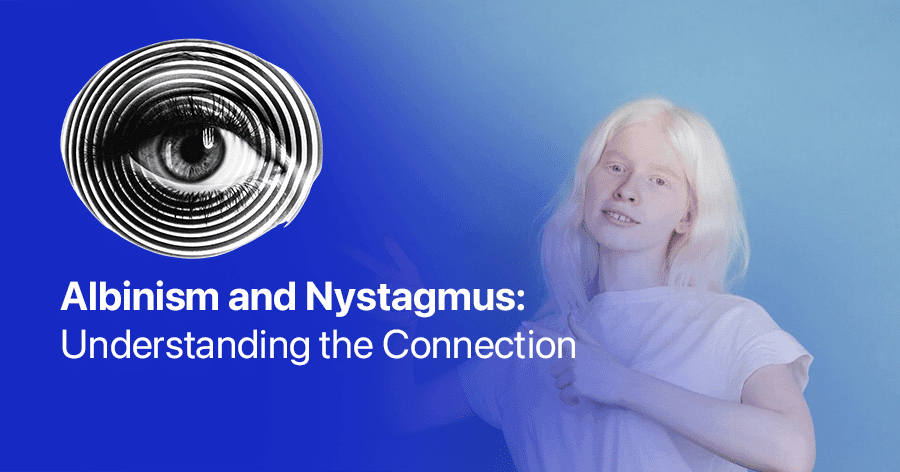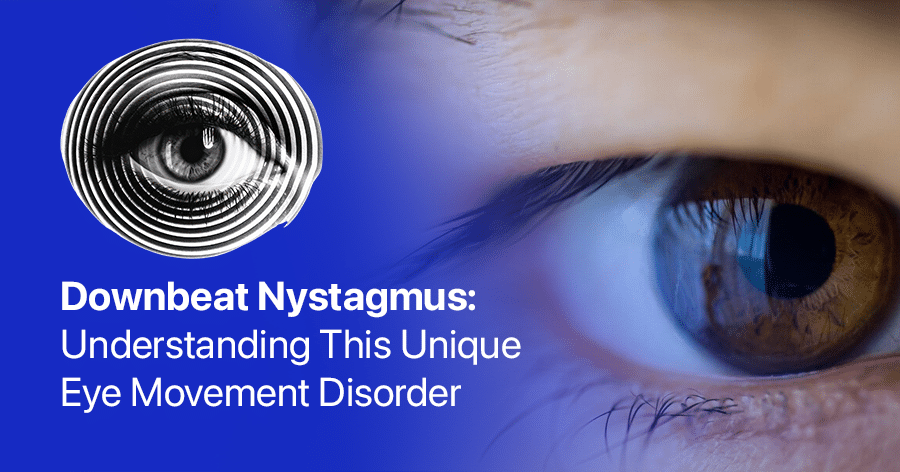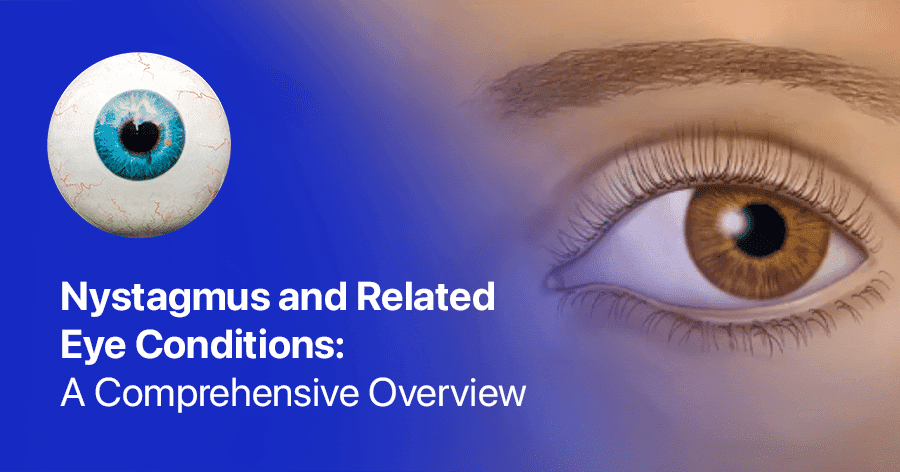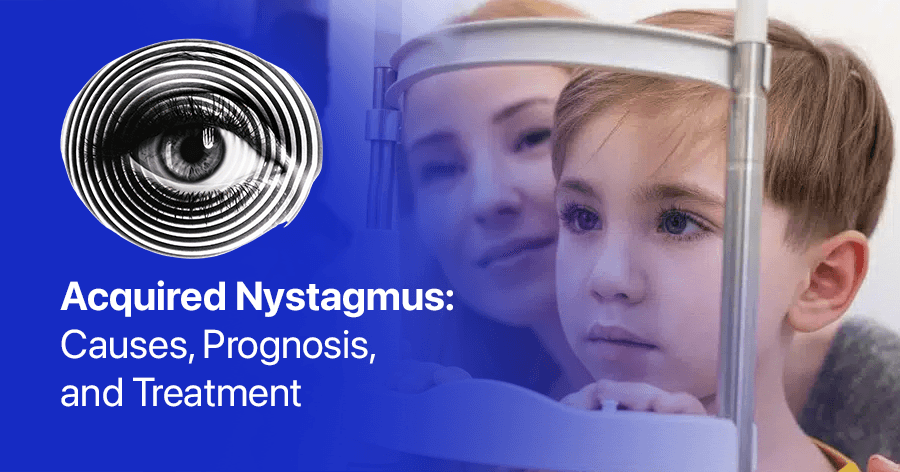
Albinism and Nystagmus: Understanding the Connection
As a neuro-ophthalmologist specializing in nystagmus, I’ve encountered numerous cases where albinism and nystagmus coexist. This article delves into the intricate relationship between these two conditions, offering insights for patients, caregivers, and healthcare professionals alike.
Why is Nystagmus Common in Albinism?
Nystagmus, characterized by involuntary eye movements, is frequently observed in individuals with albinism. This connection stems from the developmental issues in the visual system associated with albinism:
- Foveal hypoplasia: The underdevelopment of the fovea, crucial for sharp central vision, contributes to visual instability.
- Optic nerve misrouting: Abnormal crossing of nerve fibers at the optic chiasm affects visual processing.
- Reduced melanin: The lack of melanin impacts the development of the retina and other ocular structures.
These factors collectively contribute to the high prevalence of nystagmus in albinism, affecting up to 90% of individuals with the condition.
Types of Nystagmus Observed in Individuals with Albinism
Albinism-related nystagmus can manifest in various forms:
- Pendular nystagmus: The most common type, characterized by back-and-forth eye movements of equal velocity.
- Jerk nystagmus: Involves a slow drift in one direction followed by a quick correction.
- Latent nystagmus: Becomes apparent when one eye is covered.
- Periodic alternating nystagmus: Direction of eye movements changes periodically.
Understanding these types helps in tailoring treatment approaches and managing expectations.
Managing Nystagmus in Albinism: Treatment Options and Visual Aids
While there’s no cure for albinism-related nystagmus, several management strategies can improve visual function:
- Optical corrections:
- Prescription glasses or contact lenses
- Tinted lenses to reduce light sensitivity
- Medications:
- Memantine or gabapentin for nystagmus suppression
- Baclofen for periodic alternating nystagmus
- Surgical interventions:
- Tenotomy and reattachment surgery
- Kestenbaum procedure for head posturing
- Visual aids:
- Magnifying devices
- High-contrast reading materials
- Specialized computer software
- Vision therapy:
- Exercises to improve fixation and tracking
Each patient’s treatment plan should be individualized based on their specific symptoms and needs.
Living with Albinism-Related Nystagmus: Coping Strategies and Support
Adapting to life with albinism and nystagmus involves more than medical interventions:
- Educational accommodations:
- Extended time for reading and writing tasks
- Preferential seating in classrooms
- Workplace modifications:
- Ergonomic workstations
- Screen-reading software
- Psychological support:
- Counseling to address self-esteem issues
- Support groups for sharing experiences
- Lifestyle adaptations:
- Learning to drive with bioptic telescopes
- Engaging in sports with appropriate modifications
- Advocacy and awareness:
- Educating others about albinism and nystagmus
- Participating in research studies
By employing these strategies and seeking appropriate support, individuals with albinism-related nystagmus can lead fulfilling lives and achieve their goals.
Stay Informed with “The Nystagmus Book”
If you’re looking to deepen your understanding of nystagmus and stay up-to-date with the latest research and management strategies, I invite you to check out my book, “The Nystagmus Book.” This comprehensive guide contains all the legitimate, up-to-date information about nystagmus as of 2024, including the most recent research findings and best practices for managing the condition.
In a world where misleading information about nystagmus is unfortunately common, “The Nystagmus Book” offers a reliable, science-based resource. It’s packed with practical tips, the latest treatment options, and insights from my 20+ years of research in the field. Whether you’re living with nystagmus, caring for someone who is, or simply want to learn more about this condition, this book is an invaluable resource.
Recent Developments and Future Directions
The field of albinism and nystagmus research is rapidly evolving, offering new hope for improved management and treatment options:
- Gene therapy: Promising research in animal models suggests that gene therapy could potentially correct the underlying genetic causes of albinism. While still in early stages, this approach could revolutionize treatment by addressing the root cause of both pigmentation issues and associated visual problems, including nystagmus.
- Artificial intelligence in diagnosis: Machine learning algorithms are being developed to analyze eye movement patterns, potentially leading to earlier and more accurate diagnosis of albinism-related nystagmus. This could enable earlier intervention and better long-term outcomes.
- Biofeedback techniques: Innovative studies are exploring the use of audio and visual biofeedback to help individuals with nystagmus gain better control over their eye movements. Early results show potential for improving visual acuity and reducing nystagmus intensity.
- Stem cell therapy: Research into retinal pigment epithelium derived from stem cells shows promise for treating various eye conditions. For albinism, this could potentially improve retinal function and stability, indirectly affecting nystagmus.
- Advanced imaging techniques: High-resolution imaging of the retina and optic nerve is providing new insights into the structural changes in albinism. This enhanced understanding may lead to more targeted treatments and better prediction of visual outcomes.
These emerging areas of research offer exciting possibilities for individuals with albinism and nystagmus. As we continue to unravel the complex relationship between these conditions, we move closer to more effective, personalized treatment approaches that could significantly improve quality of life for affected individuals.




